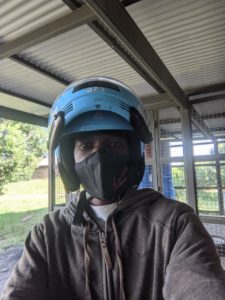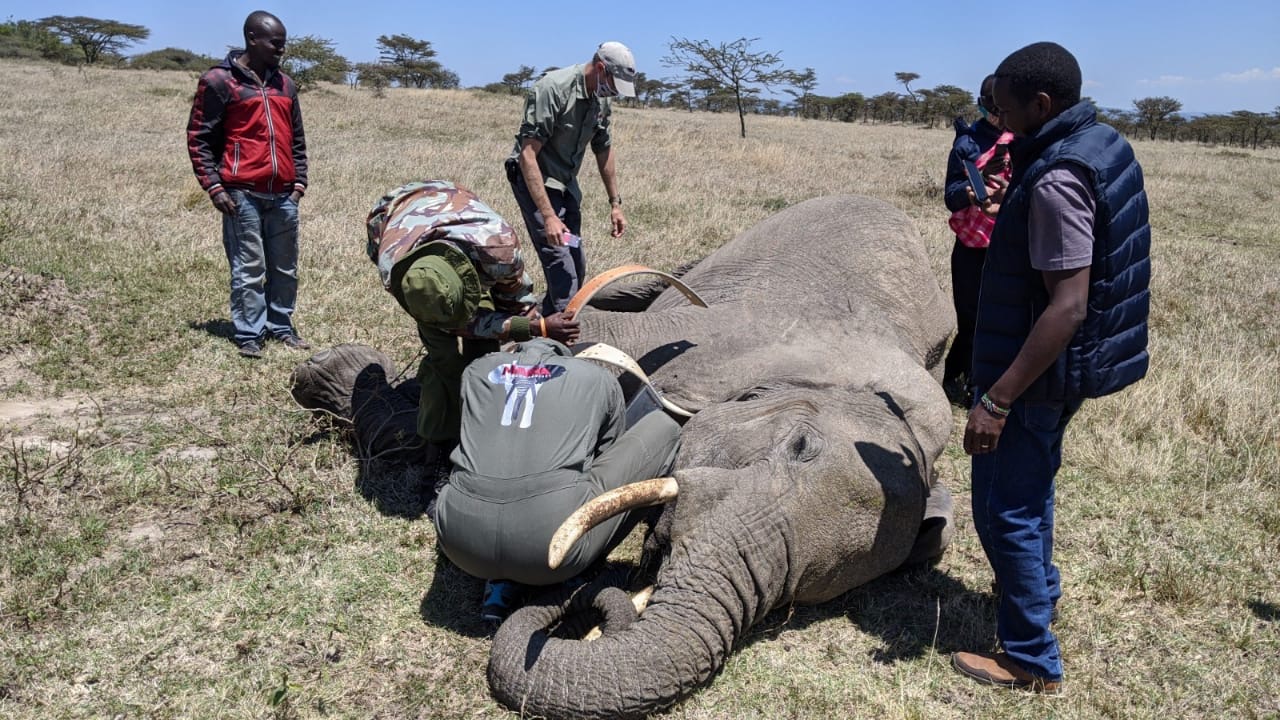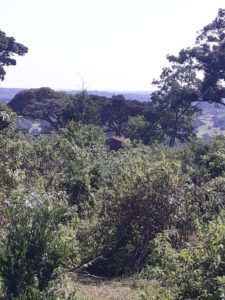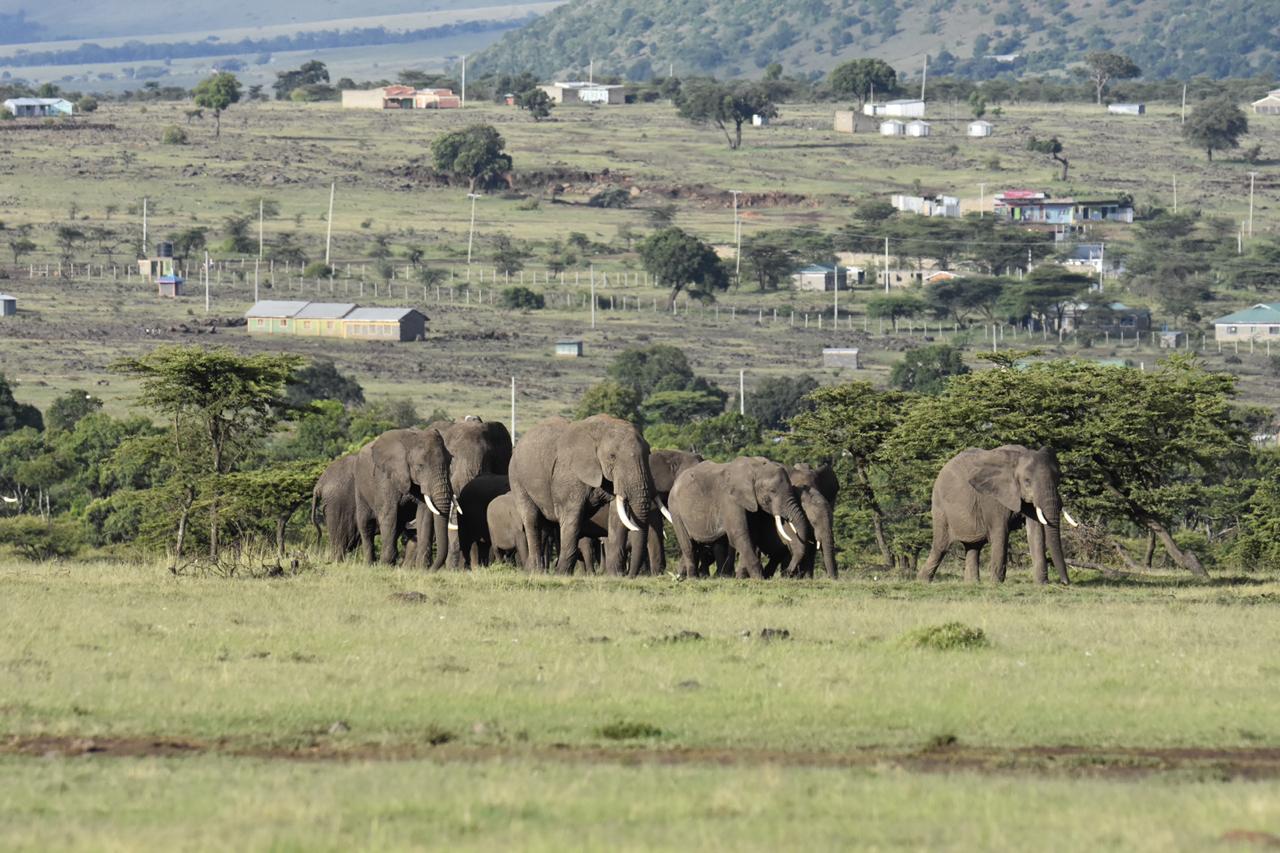In the third quarter, the Mara Elephant Project Research Department started reporting on deforestation in the three forested areas that MEP is operating: Loita, Mau and Nyakweri using GLAD Deforestation alerts now available within the MEP EarthRanger platform. The current rate of loss in Nyakweri Forest has reached approximately 1 event per square kilometer – nearly twelve times the rate of forest loss as the Loita Forest. The NDVI values (i.e., a measure of vegetation greenness) for the year show that it has been very wet, and green compared to normal. In all regions (Mara, Mau, Rift Valley, Loita) we calculated NDVI to have nearly record values and it will be interesting to see how these conditions affect the movements of wildlife. Unintuitively, high-rainfall years are also associated with higher incidents of fire (because of the increased grass cover) and this is something we’re analyzing in collaboration with other researchers.

 In July, we saw the return of the migratory wildebeest from the Serengeti. Data from tracked animals has recently shown that the wildebeest are spending on average 35 days less per year in the Mara portion of the ecosystem possibly due to human pressures and competition with livestock. The lesser known Loita Plains migration has been severely affected by fencing and we hope that the fence data being collected by MEP across the conservancies/Loita plains will help to explain the changes in movement patterns of both elephants and wildebeest. Knowing where fences are helps us both from an operational standpoint in being able to help mitigate conflict but also in analyzing these data to better understand how elephants are being impacted by the proliferation of new fencing across the Mara. All of our now three field assistants (one pictured left) are working on mapping fences, roads and landcover ground-truthing points using motorbikes and our Njia app. In the second half of 2020 they mapped 1,463.3 km of fences divided out into electrical, wire and other.
In July, we saw the return of the migratory wildebeest from the Serengeti. Data from tracked animals has recently shown that the wildebeest are spending on average 35 days less per year in the Mara portion of the ecosystem possibly due to human pressures and competition with livestock. The lesser known Loita Plains migration has been severely affected by fencing and we hope that the fence data being collected by MEP across the conservancies/Loita plains will help to explain the changes in movement patterns of both elephants and wildebeest. Knowing where fences are helps us both from an operational standpoint in being able to help mitigate conflict but also in analyzing these data to better understand how elephants are being impacted by the proliferation of new fencing across the Mara. All of our now three field assistants (one pictured left) are working on mapping fences, roads and landcover ground-truthing points using motorbikes and our Njia app. In the second half of 2020 they mapped 1,463.3 km of fences divided out into electrical, wire and other.
The MEP Research Department made progress in November with consolidating and cleaning spatial data layers into the Landscape Dynamics database. We’ve submitted a paper in collaboration with Peter Tyrell from Oxford/SORALO describing the database system. Public data, including the most up-to-date information on roads, fences etc., can be downloaded in different formats from ArcGIS online. All of the MEP collected road and fence data are available through this system. Vulcan has now released the ‘ER Tracks’ mobile app for Android on the Google Play Store. Dr. Jake Wall helped with coding and design of the app and it gives MEP the ability to track rangers and vehicles cheaply and easily, and even offline while out of data network coverage and using a simple Android phone. MEP will be helping to deploy the app with other organizations and wishing to partner in using MEP’s EarthRanger system. We were also very happy to receive $5,500 of Google Cloud Credits this quarter from the Google Earth Outreach team. We’re using the cloud credits to run analysis code in the Google Cloud to better understand how and why elephants use the space available to them in the Mara. Our analysis approach requires very fast CPUs and lots of computer memory – something Google is very good at, and the cloud platform will help our analysis immensely. In late July, a two Caltech students based in the US – Peter Kulits & Sara Beery, began work on an indivudal elepant identification system called Elephantbook. Attempts have been made to use elephant ear contours but so far with limited success. Peter & Sara have linked our Elephantbook with the MEP EarthRanger platform and is researching ways of using different machine learning approaches to help identify elephants based on visual characteristics. We are grateful for the collaboration with ElephantVoices and Elephants Alive in South Africa on this project and who have shared a vast archive of elephant photos and sighting records. We had several meetings of the restructured One Mara Research Hub where many top scientists and conservationists are now represented on its new ‘Advisory Council’ consisting of 20 members from organizations/universities with interests in conservation of the Mara. The Hub will hopefully lead to better capacity for addressing gaps in the conservation research necessary for long-term protection of the Greater Mara Ecosystem.
We were lucky to have Evans Imboma join us at MEP. Evans is doing his undergraduate degree at Eldoret University and previously spent several months as an intern at the MEP HQ and starred in the documentary Mabingwa. While he waits for classes to start again in the new year (delayed because of COVID-19), we asked Evans to help support the Kenya Wildlife Service (KWS) led dung decay rate study in the Mau Forest. Measuring dung-decay rates is critical to the success of the upcoming dung survey that will estimate the number of elephants living in the Mau Forest. In October, two of our field assistants were seconded to the KWS led Mau Forest dung count and MEP also supported the operation logistically with a vehicle and we are excited to hear the results when finalized by KWS.
KWS and MEP took part in four different collaring operations during the second half of the year. Two new elephant collars were deployed in an area known as the Sand River corridor. Previous data has shown elephant connectivity from the Mara to the Loita Forest through this area in the south-eastern portion of the Mara ecosystem. Our goal is to collect more movement data from more elephants in the area and use the data to help in landscape planning to maintain connectivity along this southern route. That’s why we collared a bull elephant, named David, in Olderekesi Conservancy after receiving reports of a group of three bull elephants going into settlement areas and raiding tomato farms along the Sand River. The second collaring was a female named Harriet in September. In August, Jepkemoi was collared in Rimoi in response to conflict and in November Hannibal was re-collared. We are grateful for our ongoing collaboration with KWS in tracking these elephants.

Collaring female elephant candidate Harriet.
 Newly collared elephant Harriet kept the MEP rangers very busy. MEP’s Alpha ranger unit has been moving her herd of 13 away from fenced in farms regularly, where they have been breaking the fences to access a large dam. Then, in December, Harriet streaked down to Tanzania and returned which is interesting given her previous months of relative residency over a small area. Collared elephant Fitz, sponsored by Angama Foundation, alongside his herd of 60 elephants continues to require constant conflict intervention by the MEP ranger team stationed in Nyakweri Forest (Pictured left: conflict mitigation in October). He stays in the forest during the day, using it for cover, then they move into Pusanki and Kilae farms at night to raid the crops. He’s been triggering geo-fence alarms surrounding these farms and the team on the ground has been consistently responding to keep him and the community safe. Fred, who usually sticks close by to MEP’s campus moved into the Triangle before coming back. Unfortunately, Tressa’s collar dropped off while she was in Tanzania but was recovered with the help of the Mara Triangle rangers.
Newly collared elephant Harriet kept the MEP rangers very busy. MEP’s Alpha ranger unit has been moving her herd of 13 away from fenced in farms regularly, where they have been breaking the fences to access a large dam. Then, in December, Harriet streaked down to Tanzania and returned which is interesting given her previous months of relative residency over a small area. Collared elephant Fitz, sponsored by Angama Foundation, alongside his herd of 60 elephants continues to require constant conflict intervention by the MEP ranger team stationed in Nyakweri Forest (Pictured left: conflict mitigation in October). He stays in the forest during the day, using it for cover, then they move into Pusanki and Kilae farms at night to raid the crops. He’s been triggering geo-fence alarms surrounding these farms and the team on the ground has been consistently responding to keep him and the community safe. Fred, who usually sticks close by to MEP’s campus moved into the Triangle before coming back. Unfortunately, Tressa’s collar dropped off while she was in Tanzania but was recovered with the help of the Mara Triangle rangers.

On November 26, collared elephant Fred was photographed with his herd crossing the road in between Mararianda to return to Mara North Conservancy by Wilson Sairowua.


